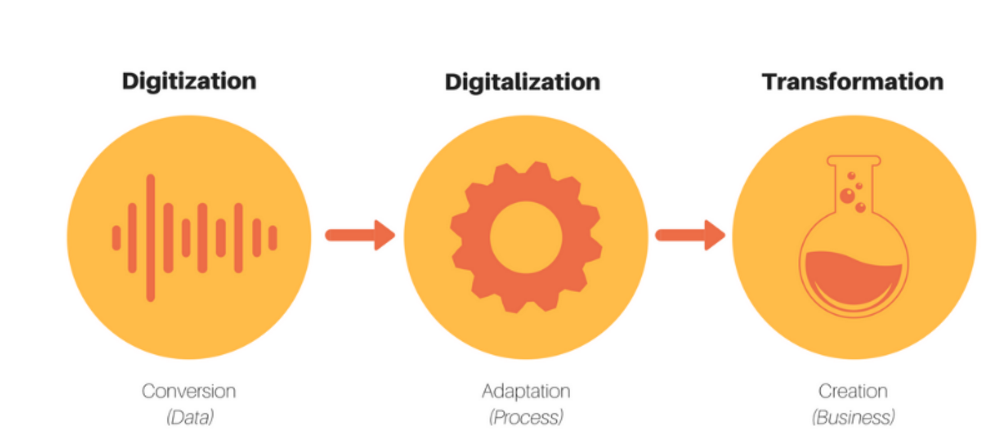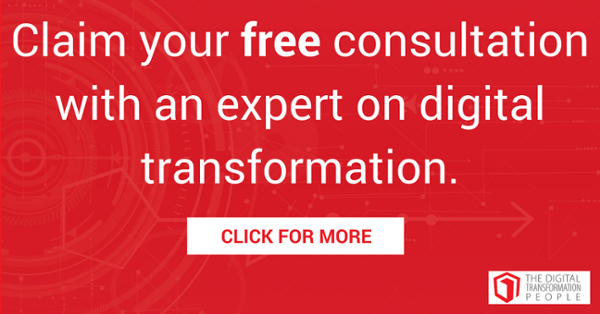Electronic tools have become stalwarts of modern society, to the point where many are even considered ubiquitous. As a result, it may seem as though digital transformation is old news, and that most (if not all) organizations are already fully digital
According to a recent report by The Hackett Group, however, the situation in procurement is very different: “84% of procurement organizations believe that digital transformation will fundamentally change the way their services are delivered over the next three to five years. Yet only 32% have developed a strategy for getting there.”
In the coming years, a digital revolution is set to take place, and the procurement world can expect substantial changes as a result. During this wave of technological change, there are several concepts that procurement professionals should familiarize themselves with to ensure they remain at the forefront of procurement processes. These changes also represent an opportunity for procurement to adopt a new operating model that is the key to its future.
Understanding the Many Facets of Digital Procurement
CPOs and Procurement teams are often unable to effectively articulate a clear vision or strategy because of misunderstandings surrounding the various words used in the context of “being digital.” As such, it is crucial that procurement professionals are aware of the latest terminology and digital trends.
Words like digitization, digitalization and digital transformation are often used in place of each other. The fact that many consider these terms as interchangeable illustrates the confusion around what digital transformation entails — hence, the trouble to build a clear vision and an executable strategy.
It is important to start by clarifying the differences between each of these terms:
- Digitization is the conversion from analog to digital. Atoms become bits (e.g. digitization of data). You cannot digitize people.
- Digitalization is the process of using digital technology, and the impact it has on business operations (e.g. digitalization of a process).
- Digital transformation is a digital-first approach encompassing all aspects of business, regardless of whether it concerns a digital business or not. It leads to the creation of entirely new markets and businesses.
Digital transformation is the broadest of the three terms, and is significantly different from digitalization. Digitalization is often an incremental improvement or an adaptation of an existing and nondigital process that increases efficiency. Digital transformation is designing new ways of doing things that generate new sources of value. It is more related to effectiveness. Additionally, it encompasses the entire enterprise, not just a particular process or function.

Procurement Faces a Perfect Storm
Procurement sits between the inside and the outside, a unique space. Thus, procurement professionals face a perfect storm, because the procurement team must:
- support the rest of the organization in its digital transformation
- manage the impact of digital technologies on the supply market
- become a digital master itself, so as to continuously increase its value proposition
Digital technologies impact the demand-side and supply-side of every market, from goods and services to labor. With an emphasis on immediacy, the availability of on-demand products and services, and the potential for mass-customization, it is no secret that we are now living in the age of convenience. Companies like Airbnb, Uber and Amazon are some well-known examples of these trends toward digital convenience — trends that also apply to B2B procurement!
For example, the manufacturing sector is entering what many call the fourth industrial revolution. Supply chains and manufacturing exemplify how digital enhances what happens in the physical world.
Supply Chain 4.0: towards 0-length supply chains powered by:
- Smart warehousing
- Predictive shipping
- Drones
- Self-driving trucks
- Uberization
Industry 4.0: batch-size 1 and mass customization made possible because of:
- Smart manufacturing and robots
- Sensors and Internet of Things
- Augmented reality
- 3D printing
Procurement 4.0
To fully realize the digital revolution, procurement professionals must also embrace a philosophy geared toward modern digital platforms. To make Procurement 4.0 a reality, teams have to ramp up some capabilities. For example:
- Category Management: Preference is given to suppliers with digital offerings, early involvement in design phases and market watch to detect emerging technology and players
- SRM² (more here): A laser focus on knowing better stakeholders and suppliers through data, on delivering high-quality user experiences and on empowering business partners (inside and outside)
- Risk Management: Exhaustive, real-time and predictive monitoring of the value chain across tiers to create anti-fragile organizations; a source of competitive ad-vantage in a VUCA world (Volatility, Uncertainty, Complexity and Ambiguity)
To enable these capabilities, procurement professionals have to become digital masters. Among other things, this means welcoming the latest technologies, including:
- Cognitive Procurement: A new type of cooperation between people and machines (artificial intelligence) designed to perform complex tasks that were previously impossible, such as developing new knowledge and insights, performing predictive and prescriptive analytics and creating conversational interfaces.
- Blockchain: A digital ledger that increases process efficiencies in the Purchase-to-Pay system and improves trust and transparency within the networks and value chain.
There is, however, more to digital procurement than the use of emerging and innovative technologies. As more and more mundane tasks will be performed by technology, more complex jobs will be performed by humans. So, people and their relationships with each other will matter more than ever. As a result, it will be even more vital to use the right talent when needed. For instance, workforce management can be transformed through digital technologies. One aspect of this transformation is the so-called gig economy (hiring independent contractors and freelancers), which allows organizations to identify and engage talent on demand.
A New Operating Model: Avoiding Anachronism
Even if technology plays a central role in the transformation of Procurement, organizations should only consider it as an enabler or a means and not as an end. Procurement 4.0 is about creating a new operating model: Procurement-as-a-Platform (or PaaP). However, it requires a change of perspective, mindset and culture in the procurement community. PaaP enables future-proofing of the procurement organization by increasing its value proposition and reinforcing its strategical importance. And, by extension, it is also the way to make companies agile and resilient, both of which are sources of competitive advantage in our current world.
Article by channel:
Everything you need to know about Digital Transformation
The best articles, news and events direct to your inbox
Read more articles tagged: Featured, Operating Model, Strategy







